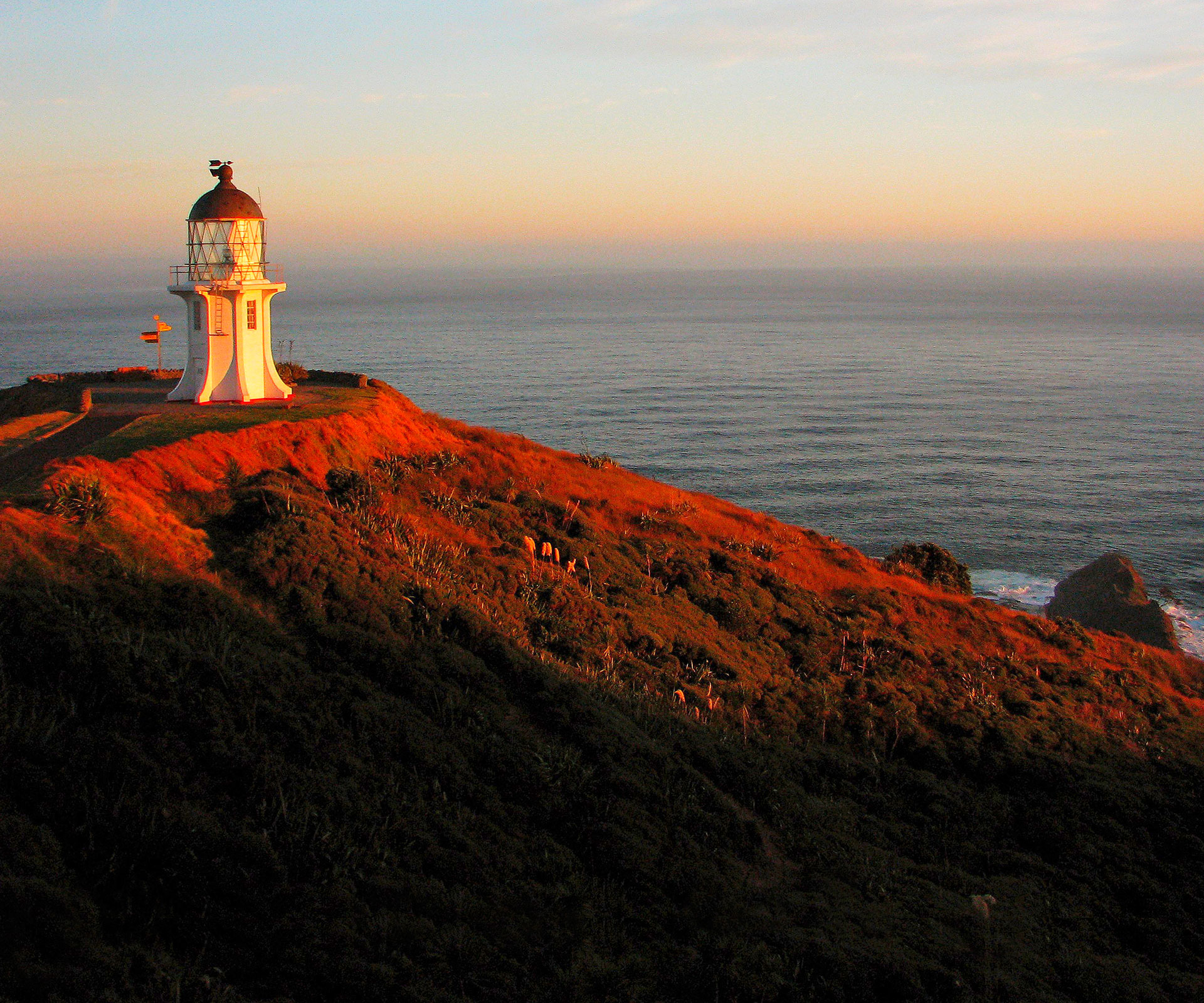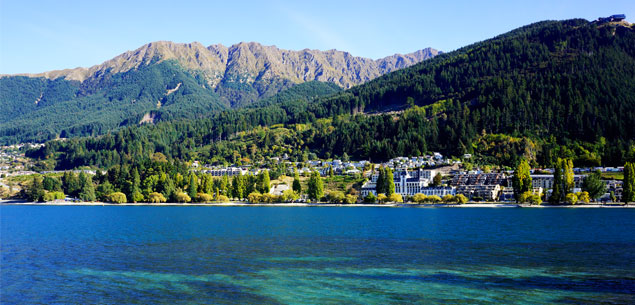With the open road stretching ahead, a full tank of gas, and baggage consisting of little more than extra socks and undies, a pair of city-dwellers heads for adventure.
My partner Alan and I are escaping the daily grind of deadlines and motorway queues for a getaway in Northland, an area rich with natural wonders and, as we discover, more culture and history than you can shake a stick at.
As we whiz by the ‘Northland Region’ sign, a marker signalling the end of hectic Auckland life and the start of the slower pace of the ‘winterless north’, the holiday vibe kicks in. I cheer like a loony, while Al tries to focus on manoeuvring past a logging truck.
Less than three hours of highway and rolling farmland later, we are winding down a shingle road off the main drag, towards our first pit stop. The Kawiti Glow Worm Caves, just before Kawakawa, are managed by a local family with strong ancestral ties to the land. Our cheery guide, Pai, leads us along a wooden walkway through an ancient cave system, cool and dripping with water.
As we dodge hanging stalactites, she explains the history of the area, before telling us to turn off our torches so we can look up to see, stretching above us, a tapestry of twinkling lights clustered into billowing shapes. The family has dubbed the echoy cavern the ‘milky way’ – the description fits perfectly. Under the high beam of a torch, the little worms look almost wiry, like unravelled white paper clips clinging to the rock.
Back on the road, a soft drizzle rolls in, blanketing the hills in mist. Before long we arrive in Paihia, and waste no time making ourselves comfortable in our spacious room at the Kingsgate Hotel. Despite the patchy weather, we throw open the sliding doors and take in the stunning view of the harbour. In between the small islands scattered across the water, we can see the rooftops of houses on the hill above historic Russell township.
After a quick dip in the hotel spa, we’re ravenous. Luckily for us, the hotel is located on the town’s main waterfront strip, with bustling cafés and restaurants barely 100 metres down the road.
Ambling along the water’s edge, our only concern is whether to start the evening with bubbles or go straight to the sav. Bliss! We savour scrumptious seafood and local wine at Alongside Bar and neighbouring 35° South restaurant. The bar area has a large balcony jutting out over the water, and as we look out into the black abyss, we imagine how nice it would be to park up here for an after-work wine as the boats slide past.

An aerial view of Cape Reinga shows how this rugged point juts out into the vastness of the ocean.
The next morning we’re up with the sparrows to catch a bus to Cape Reinga. Bleary-eyed and laden with provisions of chocolate and salted peanuts (keeping your strength up while on holiday is essential), we settle into our seats on the packed Fullers Great Sights coach. Our driver, who says his Maori name is too hard to pronounce so we should call him Huey, has been taking people up to the Cape for decades. As far as tour guides go, he is top value. With his easy patter and comic timing, he soon has us all laughing with his tales of local legends and epic fishing contests, childhood days growing up in the area, and stories of what he likes to do to those who make a mess on his coach.
We visit the lush Puketi Kauri Forest, and pass avocado orchards, tiny deserted towns and kauri timber yards before beginning our climb up a winding road towards the northern tip of the country. Huey tells us of the spiritual significance of the area for Maori, as the place where souls depart before journeying to their final resting place.
Close to the top, he asks us to take a moment to think of loved ones we have lost, before singing a haunting waiata. Huey’s heartfelt song, coupled with memories of a recent family bereavement, makes me misty eyed. I try to focus my attention on the beach below and feign choking on a peanut to regain my equilibrium.
Soon we’re following the path through native harakeke towards the incredible view from the lighthouse. Below us is a protruding rock that whales apparently use as a back scratcher, and out in the water a seam of small breakers marks the exact spot where the Tasman Sea and Pacific Ocean crash together.

Clockwise from left: Christ Church, Russell. Paihia is at the centre of a yachting paradise. Paihia’s 35° South restaurant. The entrance to Kawiti Caves.
A lesser known attraction of the area is the magnificent sand dunes at Te Paki Stream. On the drive back, we stop to go ‘sandboarding’, which involves flying down the dunes, face first, on a boogie board. Technique, we discover, is the key to reaching top speed without receiving a dermabrasion treatment from sand in the face. Once we master the trick it’s exhilarating, and I imagine I’m in the Sahara Desert as I crunch on stray bits of grit between my teeth.
After a lazy lie-in the next morning, it’s time to take to the water. As part of the Fullers Cliffs and Caves cruise, we nose around secluded beaches and craggy outcrops, glide past the luxurious hidden hideaways of business tycoons and rich-listers, and keep an eye out for the dolphins that regularly play in the breakers. A highlight is Motuarohia, or Roberton Island, where we walk to a lookout with jaw-dropping views over the Bay. Captain James Cook anchored the Endeavour off the tiny island in 1769, although his visit wasn’t as peaceful as ours – he reportedly had a gunfight with the locals.
Back in Paihia, we enjoy a divine dinner at Provenir restaurant. Meals like these are a rare treat, and the food is presented so beautifully I can’t resist being one of those people I usually mock – who take their phones out for sneaky pics of their plates. I say it’s in the name of thorough journalistic practice, although Al suspects it’s so I can brag about it later on Facebook. Guilty as charged.
Packing up for our next adventure, we feel sad to leave this lovely spot. But, as it’s only about three hours drive from our shoebox abode in central Auckland, we vow to come back soon.

Looking across the mouth of Hokianga Harbour to the vast sand dunes that frame its northern shore.
Making our way 88km across the region to Omapere in the Hokianga, the road is so quiet we feel as if we are the only people for miles. I grab my phone to check the weather forecast, only to find there is no coverage. We are truly in the wops.
When we arrive at the Copthorne Hotel and Resort Hokianga, later than anticipated, the gregarious owners Pip and Shane Lloydd are waiting for us.
I apologise for the lateness but Pip won’t hear of it. “No worries,” she assures us, “you’re on Hokianga time now!”
Before long we are propped up at the bar doing what we both excel at – relaxing, with a beer in hand. Outside the window, the harbour is sparkling. There are no bobbing boats or craggy islands, but Hokianga has a beauty of its own – vast sand dunes glow golden in the evening sun, and the water looks a particularly pale shade of blue.
As darkness approaches, we prepare for our night visit to the ancient Waipoua Forest. Our guide for the Footprints Waipoua tour stops along the way to tell us the legend of Kupe, believed to be the first Polynesian to discover New Zealand, and of the two taniwha (water monsters) who guard the narrow entrance to the spiritually charged Hokianga Harbour.

From top left: The Stone Store at Kerikeri. Tane Mahuta in the Waipoua Forest. Sand dunes at Te Paki Stream.
By the time we reach the forest, it’s almost black. Shuffling along in the dark, we can hear the faint popping sound of kauri cones hitting the ground. Soon we approach Te Matua Ngahere, ‘The Father of the Forest’. This impressive old boy is a solid slab of timber, estimated to be between 2500 and 3000 years old, with a 16m-diameter trunk.
We move on, full of anticipation, towards the famed Tane Mahuta, thought to be the world’s tallest kauri tree. Our guide chants a spine-tingling karanga (call-out) into the blackness, and we turn to see Tane, ‘Lord of the Forest’. As we stand transfixed, our eyes follow the colossal trunk up and up, 51 metres to the top. Maori believe the breathtaking kauri to be the physical representation of their god of the forest, and he is a truly unforgettable sight.
We’re still buzzing from our night-time bush-walk as we load up on coffee and begin the drive south the next morning. In my mind, I’m still in holiday mode for as long as we are out of cellphone range but, all too soon, the familiar tinny chimes drag us back to reality. Our Northland escape has been special. We only wish we could bring some of that ‘Hokianga time’ home with us.
Words by: Sarah Bunny
Photos: Supplied

